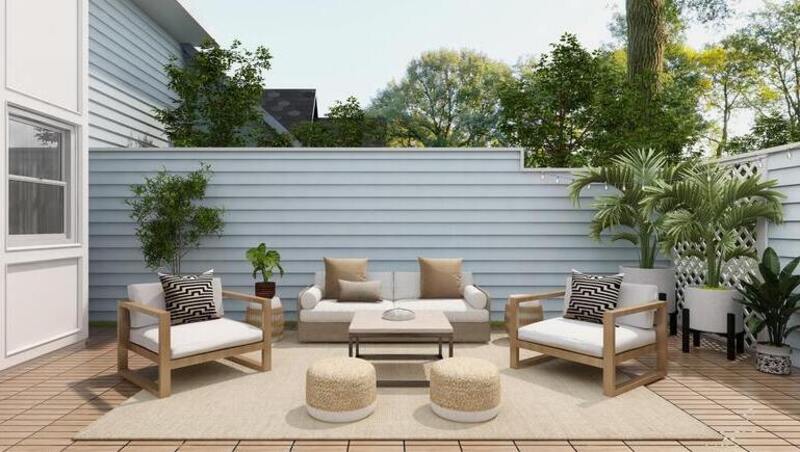How to build a terrace garden that is ideal for your small space?
If you are looking for an ideal terrace garden that is perfect for your small space, then this blog post is just what you need. We will discuss the benefits of building a garden on your terrace and how to create one that fits your needs.
This blog will show you how to use small space at home to grow an incredible amount of vegetables and herbs that we can enjoy all year round. There’s always place for plants, regardless you live in a huge house or a little flat!
The amount of time it takes to build a garden can vary depending on the size and complexity of the project, but most can be built within 2 weeks or less. You’ll have to consider things like lighting, soil type, water access, fertilizers and more when creating yours- so there’s no right answer! However, we’ve found some helpful tips and terrace garden ideas to get you started.
Small Space Terrace Garden Ideas:
1. Choose a small space in your backyard to build the garden
Keep in mind that you do not want to be walking on the garden area after it has been planted. Garden plots are best built in areas where people are less likely to be walking on. Many people choose their side yard, back patio, or front porch. These areas are best.
Measure the size of your space and decide on which type of garden you want – vegetable, herb, or flower. Most families choose to plant a vegetable plot. Vegetables will give your family their daily needs of fruits and vegetables, which is very healthy for them. However, if you do not like vegetables or do not eat enough vegetables, an herb plot may be best for you. Herbs are generally used in food as seasonings and spices (not eaten directly).
If you are interested in having flowers, then this would be the best type of garden for you. This would not be recommended if your family is young because there may be many dangers to having flowers around small children (toxins, allergies). Do your research on what vegetables grow well in your zone and climate.
2. Pick out plants that are compact and can grow in tight spaces.
Although there are many plants that can be used in a small garden, some plants will grow much larger than others. You may already know which plants you want to plant into your garden. If not, it is best to look online for lists of suggestions. Plants like radishes do great in compact spaces and are very healthy for you as well. Small gardens benefit from running plants as well.
3. Purchase an adequate amount of soil for planting
It is recommended that you prepare the soil before constructing your garden by tilling up the land. Tilling or breaking up the ground will require a garden rake and either a shovel or spade. Loosen up the soil, you want it to be easy to dig later on. With the tilled soil, you will only need to purchase an adequate amount of garden soil for planting.
Dig up your first row and place some soil into your hole. You will want to dig holes about 12 inches wide and 12 inches deep. This is the recommended size for most vegetables. You may plant even smaller veggies if you wish to. For example, carrots and radishes only need about 4-6 inches in each hole so they will fit perfectly in a smaller hole.
4. Consult with a gardening expert to see what kind of plants would work best for your area’s climate
It is important that the plants you buy will grow into your climate conditions. If there are no gardening experts near your location, try an online expert. Gardeners who have been in the business for many years will be able to tell you which plants are best suited for your area. If you live in a warmer area, you may be able to plant some vegetables that are not typically grown in your area. A great example is cauliflower; cauliflower can grow in areas that have hot weather. To further your research, look into what vegetables are typically grown in your area.
5. Plant all your seeds according to instructions given by the gardening expert
You’ll want to be certain that your seeds are put deep enough while you’re planting them. If the instructions say, “plant 1/2 inch deep” then make sure that is what you do. You may need some sort of measuring tool (ex. ruler) to measure how far down into the ground the seeds should be placed.
To ensure that you don’t lose track of your seeds, plant them in rows. It is best practice to plant vegetables in rows because you can keep track of them better. You will be able to water each seed equally and make sure that the area is evenly tilled. It is also easiest to weed when the garden is in rows. All of your veggies and herbs should be planted at the same time so that they can thrive together.
Conclusion
The devil is in the details when it comes to creating a beautiful landscape. A small space can be turned into an oasis with some creativity, hard work and basic gardening knowledge. With just a little bit of research on plants that are right for your climate, you’ll have everything you need to build one of these gorgeous gardens in no time.
Vanshika Aggarwal

